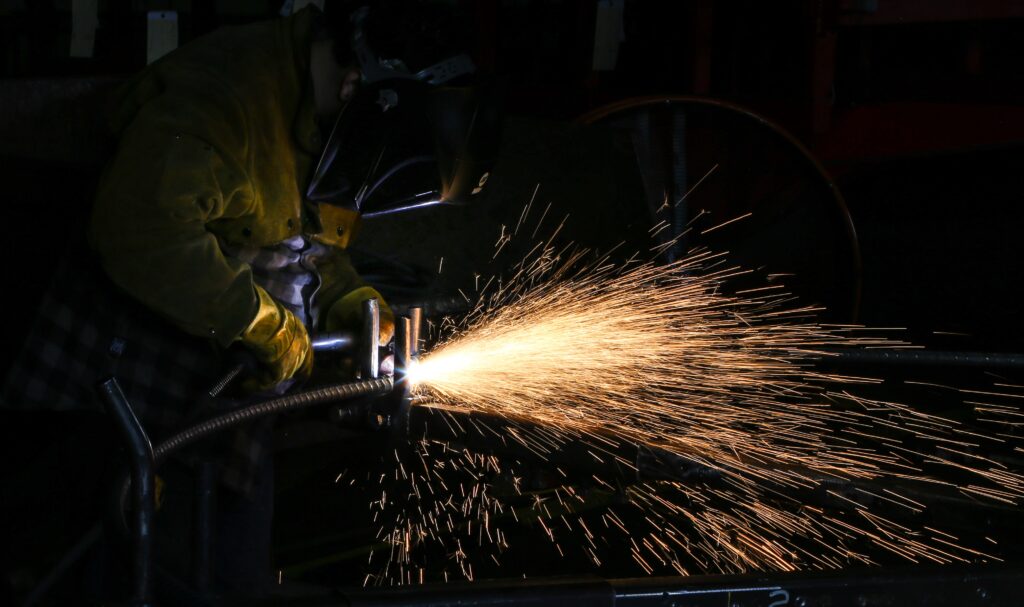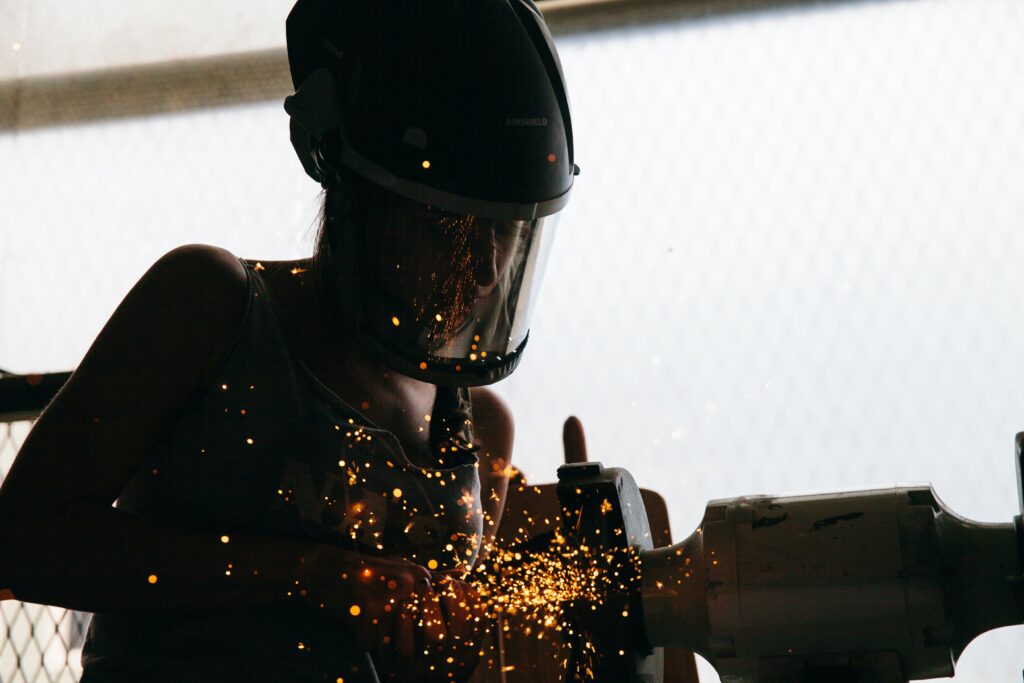Get ready to immerse yourself in the intriguing world of welding apprenticeships! Inside, you’ll explore exactly what this journey entails, from the first application to the mastery of your craft. You’ll also get a closer look at the rewards and challenges that come with this line of work. In the world of metalwork, an apprenticeship isn’t just a stepping stone – it’s the path that shapes you into a confident, skilled, and sought-after professional. “How Welding Apprenticeships Work” aims to enlighten you about the ins and outs of your future career, offering a definitive guide for those seriously considering this route.

Understanding the Concept of a Welding Apprenticeship
Welding apprenticeships are programs that provide aspiring welders with the opportunity to learn essential skills and gain experience in the field of welding. These apprenticeships often combine classroom instruction with hands-on training, allowing apprentices to gain practical, real-world experience while also enhancing their technical knowledge.
Defining a Welding Apprenticeship
In simple terms, a welding apprenticeship is a structured training program that prepares you for a career in welding. It typically involves a mix of theoretical learning in a classroom and practical learning in a workplace under the supervision of a skilled mentor. The overall goal of a welding apprenticeship is not only to teach you the basic and advanced welding techniques but also to help you understand the different types of welding processes, safety practices, and industry standards.
Origins of the Apprenticeship System
The apprenticeship system dates back to the Middle Ages, where craftsmen like blacksmiths and carpenters would take on young people as apprentices to teach them their trade. In modern times, apprenticeships have evolved to adapt to a wide variety of industries, including welding. The fundamental concept remains the same: provide on-the-job training under the supervision of experienced professionals in conjunction with classroom instruction.
Significance of Welding Apprenticeships
Welding apprenticeships play a significant role in the welding industry. They provide the next generation of welders with the technical knowledge, practical experience, and hands-on skills necessary to meet the demands of the job. Welding is a highly technical skill and having a well-trained workforce is imperative for maintaining safety and quality standards in the industry.
Types of Welding Apprenticeships
There are various types of welding apprenticeships available, each tailored to different aspects of the welding industry.
Description of Various Welding Apprenticeships
Some welding apprenticeships focus on specific processes such as TIG (Tungsten Inert Gas), MIG (Metal Inert Gas), SMAW (Shielded Metal Arc Welding), or FCAW (Flux Cored Arc Welding). Other programs may specialize in various sectors of the welding industry like shipbuilding, construction, automobile manufacturing, or pipeline installation. There are also comprehensive apprenticeships that cover all aspects of welding.
Differences Between the Types
The main differences between the various types of apprenticeships lie in the specialization area. Some may focus more on certain welding techniques while others may emphasize certain industry-specific applications. The duration of the apprenticeship, the balance between classroom training and on-the-job practice, and the type of certification offered at the end of the program may also differ.
Choosing the Right Welding Apprenticeship for You
Choosing the right apprenticeship depends on your career goals, interests, and skills. If you are interested in a specific area of welding, you may want to consider an apprenticeship that specializes in that area. Making this choice requires researching the different programs available, considering your long-term career goals, and evaluating how the structure and content of the apprenticeship align with these goals.
Entry Requirements for Welding Apprenticeships
Before you can apply for a welding apprenticeship, you need to meet certain entry requirements.
Educational Requirements
Most welding apprenticeships require you to have a high school diploma or a GED. Some programs may also require you to have taken certain subjects, such as math or physics, as welding involves a good deal of technical knowledge and calculation.
Technical Skill Requirements
Some welding apprenticeships may require you to have basic welding skills before admission, while others may accept beginners who are willing to learn as they go along. A basic understanding of tools and safety precautions can be beneficial.
Physical Requirements
welding is a physically demanding job that requires manual dexterity, strength, and stamina. As such, you must be physically capable of performing the tasks involved.
Age Restrictions
Typically, you must be at least 18 years old to start a welding apprenticeship.
Application Process for Welding Apprenticeships
applying for a welding apprenticeship involves several steps.
Preparation for Application
Before applying, make sure you understand the specifics of the program and that it aligns well with your career goals. review the application packet thoroughly, so that you know what is expected of you.
Understanding How to Fill Out the Application
applications usually require personal information and details about your education and employment history. They may also require an explanation of why you are interested in welding and what makes you a good fit for the program.
Going Through Interviews and Assessments
Once you have submitted your application, you may be invited for an interview or a skills assessment. These allow your potential employers to evaluate your aptitude for the program and offer you the chance to ask any questions about the apprenticeship.

Components of a Welding Apprenticeship Program
A welding apprenticeship program usually consists of a few key components.
Combination of Technical Instruction and On-the-Job Training
A typical welding apprenticeship will involve both classroom learning and hands-on training. In the classroom, you will learn about different welding techniques and concepts, safety guidelines, and industry standards. On-the-job training allows you to apply what you’ve learned in a real-world setting under the supervision of experienced professionals.
Role of Mentors
Another key component of apprenticeship programs is the mentor-mentee relationship. Experienced welders provide guidance, share their insights, and offer critical feedback, helping you to improve your skills and understanding of the trade.
Apprenticeship Duration
the length of welding apprenticeships can vary, but they generally last between 1 to 5 years. During this time, you are expected to work a certain number of hours and successfully complete your coursework to graduate from the program.
Skills Acquired During Welding Apprenticeships
A welding apprenticeship will equip you with a range of skills, both technical and soft.
Developing Welding Techniques
Over the course of your apprenticeship, you will master various welding techniques, including the expert handling of different welding machines and equipment.
Improving Critical Thinking and Problem-Solving Abilities
Not everything goes to plan during welding operations, so you’ll need to be able to think on your feet and solve problems as they arise.
Learning About Safety Procedures
The welding industry has stringent safety requirements, and throughout the course of your apprenticeship, you’ll learn how to adhere to them to avoid injuries and mishaps on the job.
Gaining Customer Service Skills
You’ll also learn how to interact with clients professionally. This includes learning how to communicate effectively, handle complaints, and uphold the best customer service practices.

Benefits of a Welding Apprenticeships
There are numerous benefits to undertaking a welding apprenticeship.
Real-world and Hands-on Experience
The most significant benefit is, of course, the real-world, hands-on experience that you gain. Through an apprenticeship, you’ll gain practical experience that you just can’t get in a classroom.
Earning While Learning
Apprenticeships also allow you to earn a wage while learning your trade. This is a great way to fund your education and gain financial independence.
Increased Job Opportunities
After completing your apprenticeship, you’ll likely have a much easier time finding a job. The skills and experience you’ve gained will make you a valuable asset to any employer.
Career Advancement Prospects
Apprenticeships often lead to better career advancement prospects. Once you’ve completed your apprenticeship, you may be offered a job with the company you trained with, or you’ll have a solid foundation to seek higher positions within the industry.
Potential Challenges in Welding Apprenticeships
Despite the benefits, welding apprenticeships can also present some challenges.
Potential Physical Demands and Hazards
Welding is a physically demanding job that involves potential exposure to various hazards, including heat, fumes, and heavy machinery. It’s essential to take safety precautions seriously to prevent injuries.
Time Commitment
Welding apprenticeships require a substantial time commitment. This includes time spent in the classroom, on-the-job training, and study time outside of class and work.
Managing Work-Life Balance
During your apprenticeship, maintaining a healthy work-life balance can be challenging, especially if you have other responsibilities such as family.
Post-Apprenticeship Steps
After completing a welding apprenticeship, there are several steps you can take to progress your career.
Obtaining Certifications
Continuing to gain further certifications in specific areas of welding can increase your job prospects and earning potential.
Continuing Education Opportunities
You might also consider additional training or education opportunities to expand your skills and knowledge, such as taking on a more advanced apprenticeship or enrolling in a college degree program.
Job Searching and Interviews
Finally, you’ll likely be seeking employment in your chosen field. This will involve drafting a compelling resume, acing job interviews, and possibly relocating for the right opportunity.
Future of Welding Apprenticeships
The future of welding apprenticeships looks promising, with numerous technological advancements, economic trends, and evolving program outlines shaping the trade’s future.
Impact of Technology on Welding Apprenticeships
Advancements in technology are changing the face of the welding industry. As such, future apprenticeships will increasingly involve learning how to work with advanced welding techniques, automation, and cutting-edge equipment.
Economic Trends and Labor Market Predictions
Economically, as industries such as construction, manufacturing, and shipbuilding continue to grow, the demand for skilled welders increases. This points toward a promising future for aspiring welders, with ample job opportunities and competitive wages.
Evolving Trends in Apprenticeship Programs
Apprenticeship programs are continually evolving to meet the changing needs of the industry. This may include more emphasis on advanced technical skills, soft skills such as communication and critical thinking, and ongoing professional development opportunities.
In conclusion, a welding apprenticeship is a rewarding and effective way to launch a career in welding. It provides hands-on experience, in-depth knowledge, and a wide range of skills. By understanding what apprenticeships involve and how to navigate them, you can make informed decisions about your career path and look forward to a promising future in the field.
